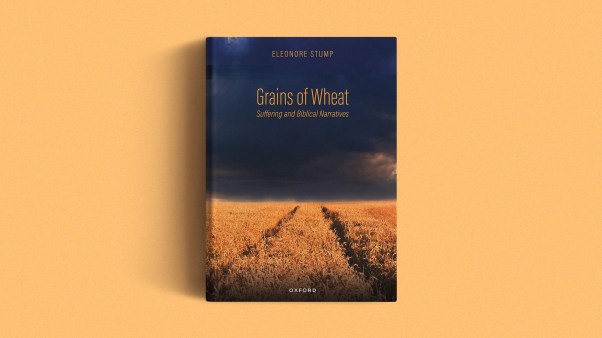Most modern playwrights are irreligious. One grows accustomed to the patterns of moral, spiritual, and even physical disintegration observable in such a play as John Osborne’s Inadmissible Evidence, in which the anti-hero spits out the “butt end of his days and ways” in a torrent of filth. We are not surprised that the protagonist has found no security or satisfaction in his work, his family, his marathon sex-pursuits, or himself. It is inconceivable that such a character would look beyond himself and his sordid career to a relationship with God and to a reconciliation in the knowledge that “his will is our peace.” So we are satisfied that Osborne has shown absolute integrity in his play.
Nor should we be surprised when another contemporary playwright, Tennessee Williams, contemplates the universe through very private spectacles, also choosing subjective reality. Williams has always preferred “special” people for his characters and has never pretended that his vision is other than private. It is the pattern of the liberal and the romantic mind to believe that truth is purely subjective, that we are our own heaven and hell. Although such views are antagonistic to the Christian faith, they do not subvert it, and they need not be of great concern for Christians.
This is not so, however, when Williams and Osborne choose to couch their perverse tales in the vocabulary and imagery of religion. In most of Williams’s plays we can easily identify his cluster of religious symbols: the gentle, loving Virgin Mary (who is seldom a virgin at the beginning of the story and never at the end), a thundering and unjust Old Testament Jehovah, and a lyric, handsome, virile Christ. The Christ-figure has grown increasingly repellent as the years have progressed. He has become the archetypal liberal Christ—socially and economically disadvantaged, morally anarchistic, unwashed, untutored, self-centered, and understandably victimized. Here we have the ultimate and inevitable extreme available to a world that prefers Christ as a symbol—as an archetype, not as a literal and living reality.
For Williams, the Christ-anti-hero in The Night of the Iguana is a man rejected by the Church for preaching moral anarchy and seducing Sunday school teachers and rejected by society for refusing to conform to its mores or its platitudes. He brings on his own ostracism and then inflicts on himself his own “martyrdom”—first, by leaping about on broken glass, and then by writhing in a hammock in what the heroine calls a “voluptuous crucifixion.” We may grant that the defrocked Mr. Shannon does have a desire for self-flagellation and that the playwright’s artistic integrity demands that he conform to the character he has created. But we wonder with concern what the ultimate effect may be of this devaluation of the Christ-image. Is it not true that to pervert the meaning of the crucifixion so as to lend significance to Williams’s Gothic tale of refugees from a Freudian bedlam is to erode the meaning of the death of Christ? If Shannon was a flagellant and is compared to Christ, should we not assume that Williams means Christ was a flagellant also? If Shannon was hated for moral depravity, does this not encourage the suspicion that Christ was equally culpable or would be if he lived today? Did Christ, like Shannon, desire the anguish of the crucifixion in a morbid hunger to punish himself for his rejection of the Old Law? Did he ever really want “this cup” taken from him?
Williams has the right to endow his “hero” with any mental and moral aberrations he chooses, of course; but his imagery suggests an unjustifiably perverted portrait of Christ. Fortunately, in the play the author clothes his murky theology in such turgid symbolism that he fails to communicate the theological implications to the great majority of his viewers.
This vagueness of symbolism is standard in the dramatic presentation of liberalized theology. One of the stellar examples is Samuel Beckett’s Waiting for Godot, explication of which has become a favorite indoor sport for modern drama critics. Amid many confusing elements, a few disturbing points are clear: The main characters are intended to represent humanity, and the Godot for whom they wait is certainly a god. A tree suggests the crucifixion. A messenger appears to be a prophet. Beckett joins the rest of the modern playwrights in warped ponderings on theology. The messenger never seems to have seen any god; the characters do not believe God will ever come; even if he should come, they doubt whether they are waiting in the right place for him; and naturally, they doubt whether he really exists at all. So they are in truth waiting for nothing. Nihilism is Beckett’s alternative to Williams’s abnormal psychology as the ultimate comment on Christ and the crucifixion.
If non-Christians choose to denigrate faith, we can hardly be surprised. We can only wish that conservative affirmation could sound as colorful and draw such consistently full houses as iconoclasm. But turning to an author who has been represented as the outstanding Christian artist of our century—T. S. Eliot—to observe Christian drama more clearly, we are again disappointed. For Eliot fails to present either a full Christian view of life or legitimate alternatives within the Christian view. He has a genuine concern for Christian ritual and clearly feels a mystical awareness of God’s presence in the midst of life. He is one of the few moderns to dare to acknowledge that the divine world does impinge upon the human world and one of the few to affirm his faith in the reality of the Christian experience and the value of the Christian heritage. But though his poetry speaks powerfully of his faith, it is questionable whether that faith is adequately communicated in his drama.
In Murder in the Cathedral, the Thomas à Becket story, Eliot chose a path echoed in Osborne’s Luther. Although Becket emerges as the saintly alternative to the dry materialism of the modern world (cf. Kernodle, “Patterns of Belief in Contemporary Drama,” in Spiritual Problems in Contemporary Literature, p. 204), Eliot denies heroism to his saint. He has Becket cogitate over the temptation of martyrdom, thereby diminishing his heroic stature and calling his saintliness into question by endowing it with spiritual pride.
In Luther, Osborne expresses less enthusiasm for Luther’s faith than for his intestinal disorders and thus loses vital spiritual dimensions in a questionable dramatization of abnormal physiology.
More questionable than Becket’s is the “martyrdom” in The Cocktail Party. Here again Eliot shows modern man faced with two possible paths. He may sit unloved and unloving by the fireside in an agony of monotony, or he may go to exotic places, sacrificing his life for a mass of ungrateful, monkey-worshiping savages who will ultimately crucify him upside-down on an ant hill. Unfortunately, there is more than a hint of ignoble motivation in Celia’s choice of martyrdom. And even if her crucifixion-as-an-escape-from-life decision is to be taken as entirely commendable, it is hardly an orthodox affirmation of Christian living and dying. One suspects that Eliot recognizes that living unloved or unloving by the sterile hearth is more demanding of Christian fortitude, as recent comments on his own unhappy life would corroborate.
These authors may be trying to present an accurate evaluation of the religion of modern man, but the Christian may legitimately refuse to accept Shannon, Osborne’s Luther, or Celia as truly representative of contemporary Christian sacrificial living and dying or of the spirit of the original crucifixon. We can easily accept Eliot’s and Williams’s and Beckett’s statements in terms of the contexts of their plays, but the Christian finds it hard to reconcile these ideas and images with his faith outside the play. Modern playwrights create suspension of disbelief so complete that the audience comes to believe in the world of the play entirely, assuming that the characters on stage speak for universal mankind.
Since Christian thought and imagery are such rich components of European and American intellectual tradition, they are available for use by an enterprising dramatist. He need not be a Christian to draw on Christian lore to enrich his artistic texture. In this sense, artists like Beckett and Williams exploit Christian thought and symbolism without writing Christian drama.
Herrick’S English Garden
With beauty
Folded in each phrase
God’s vicar poet
Sang His praise:
We see Him come
And know Him ours
Who with His sunshine
And His showers
Turns all the patient ground
To flowers.
The threshold
Of his open door
Was worn by footsteps
Of the poor.…
Still in these leaves
Of fantasy
And flowers sits
An eternal May;
And on the green
Immortal trees
Stand fruits
Of the “Hesperides”
Where God’s hungering
Till time is done
Come for gold apples
Of the sun.
M. WHITCOMB HESS
Moreover, even the Christian dramatist may elect to explore only a limited area of the Christian life and omit large areas of Christian experience. Eliot, in his decision to work a limited vein, could write Christian drama without writing all-inclusive Christian drama. And the Christian reader and viewer may easily derive real values from such drama as that we have just explored. Laughter at man’s irrationalism can point to the absurdity of man’s pride; horror at man’s depravity can serve as evidence of sin and the need for salvation; pity for man’s pain and confusion can show the need for God’s controlling hand.
But there is much more to the Christian faith than this. The Christian artist can use such materials to point to man’s agonizing need for the controlling hand of God. But he could also explore a Christian life that is not a series of sterile and confusing symbols but a pattern of grand emotions and real dignity. He could present (as Graham Greene has consistently striven to do) the reality of God’s presence in life. He could end his plays, not in futility and despair, but with a recognition that there is a power that can save and heal man and guide him so that he need not live in chaos. He could show men of God as something more than nervous Nellies, organization men, seducers, perverts, egoists, and weak-minded exponents of a worn-out system. He could explore the possibility that sins against our fellow humans are not the only sins, that we may also sin against ourselves and against our God. He could delve into moral problems with an awareness of their complexity but with a belief in good and evil as well—not simply with pat sociological and psychologically deterministic explanations concluding in a meaningless self-pity.
The Christian artist could emphasize salvation as well as sin, peace as well as turmoil, certainty as well as doubt. No one desires to dictate to the Christian artist what he must write to be considered orthodox, but it would be a relief to see some powerful, intellectually and artistically satisfying Christian drama.
In the meantime, Christians should become more sensitive to attacks on their liturgy, sacred symbols, and faith. They need not believe that Osborne’s hero is honestly representative of modern man, or that Eliot has presented an exhaustive vision of available choices for our way of life. They should reject the concept of voluptuous crucifixions or of the pervert-as-Christ. There is no need to embrace each new idea as novel, fascinating, or assuredly worthy of serious consideration.
Shock has served too long in the theater as substitute for thought, and the result has been as harmful to the theater as to the Church. It has divorced the theater from a vital source of inspiration and has made a glittering toy out of material that could be majestic and profound.
Milton D. Hunnex is professor and head of the department of philosophy at Willamette University, Salem, Oregon. He received the B.A. and M.A. degrees from the University of Redlands and the Ph.D. in the Inter-collegiate Program in Graduate Studies, Claremont, California. He is author of “Philosophies and Philosophers.”










